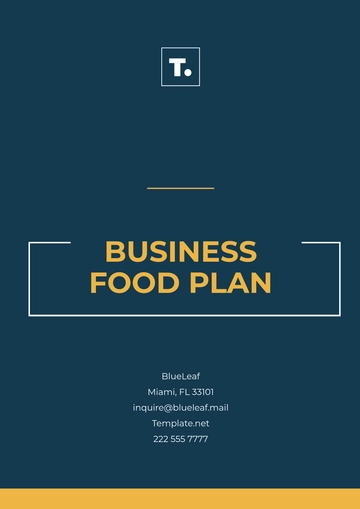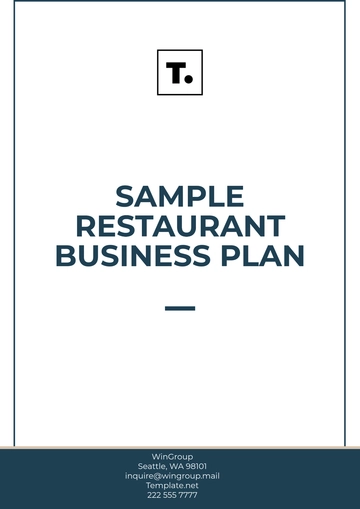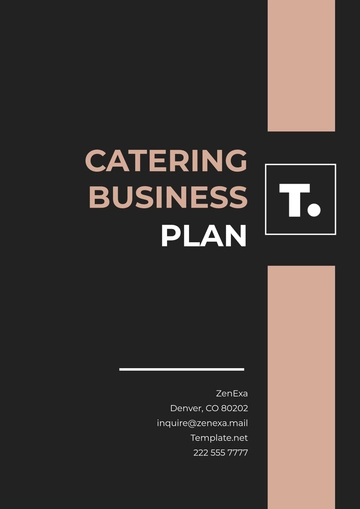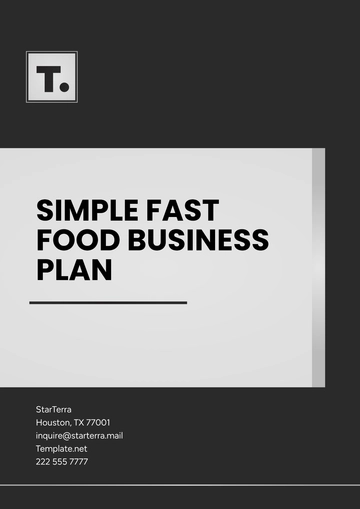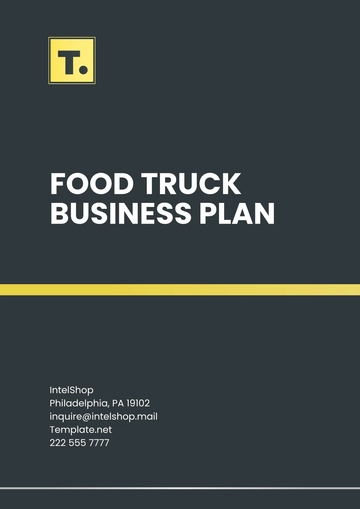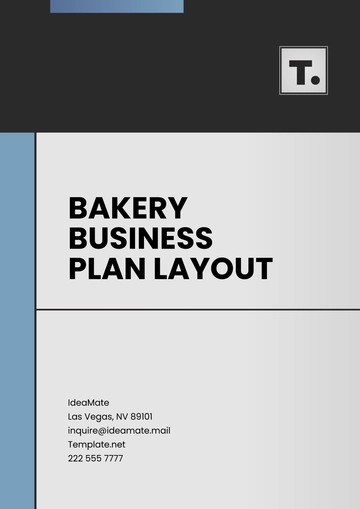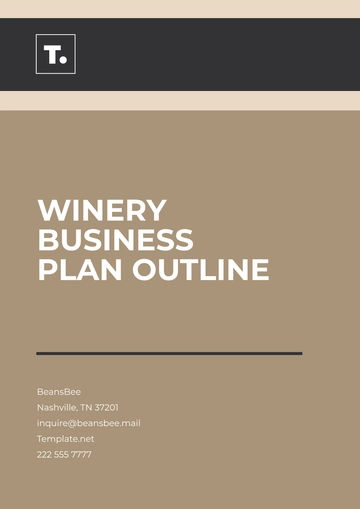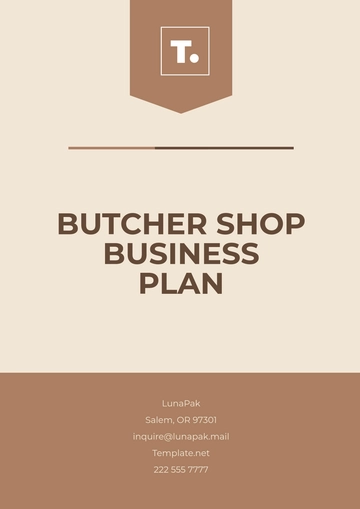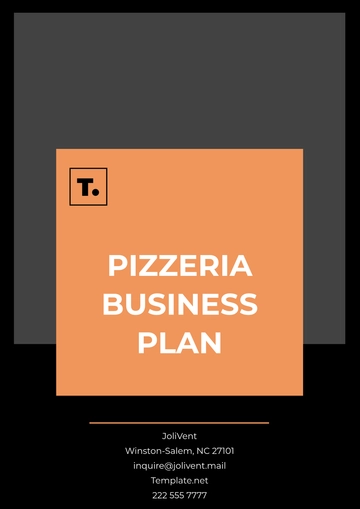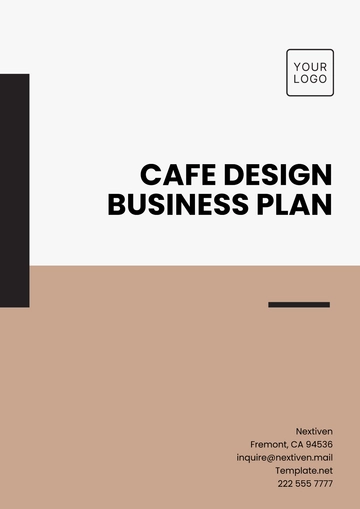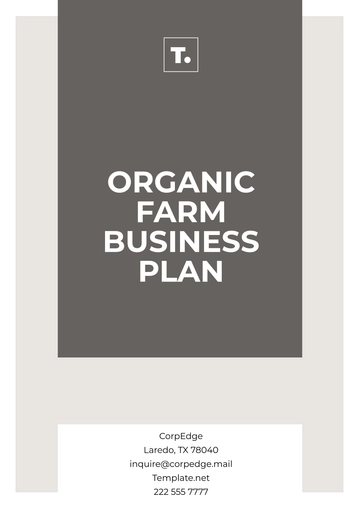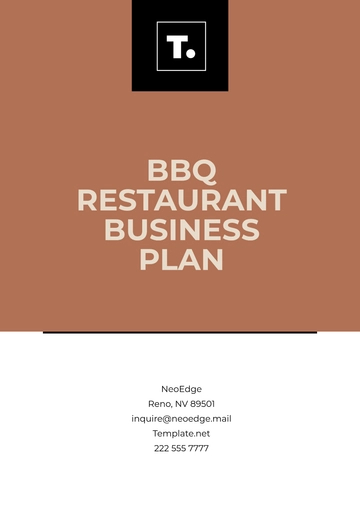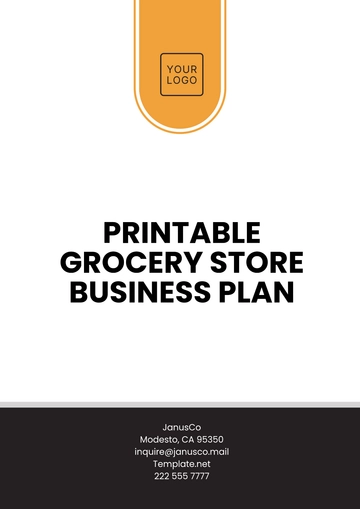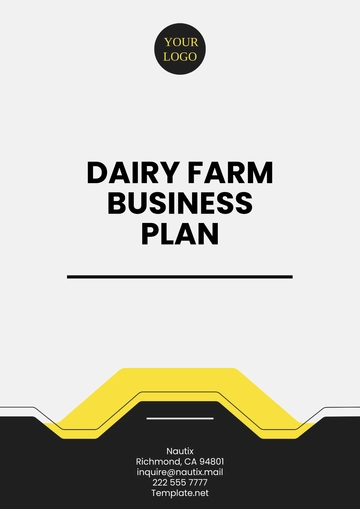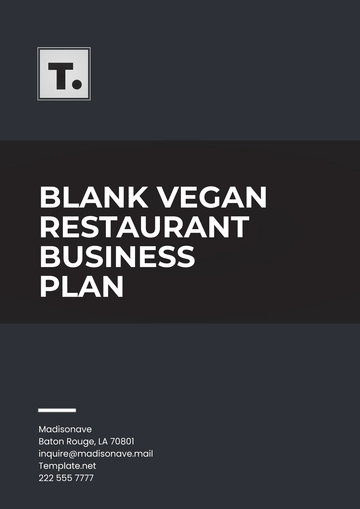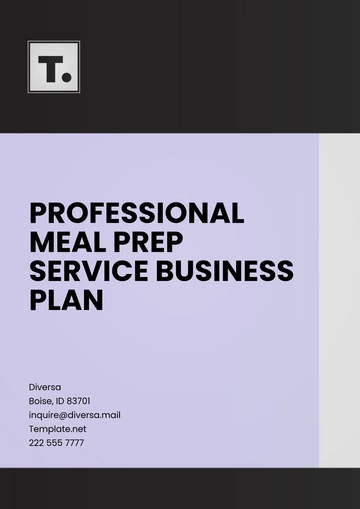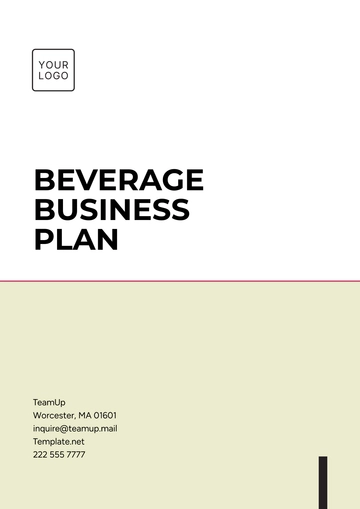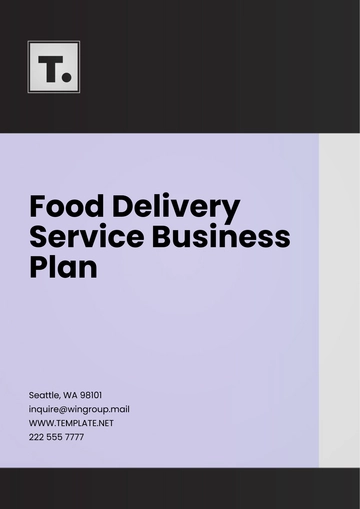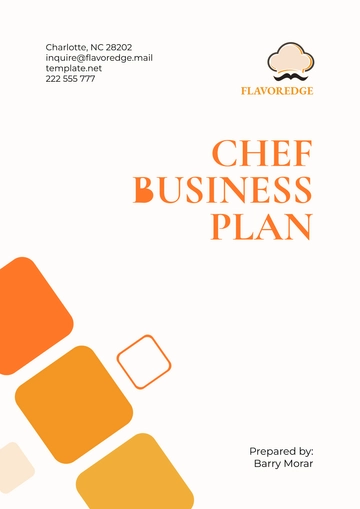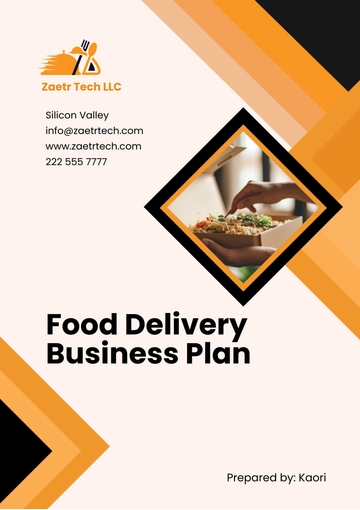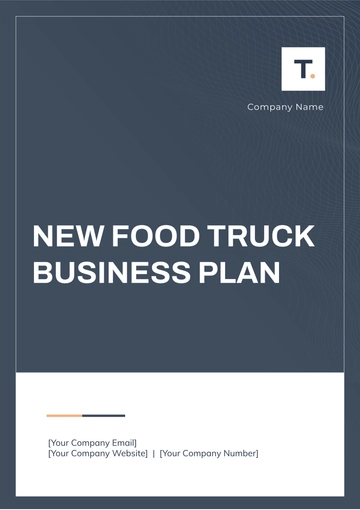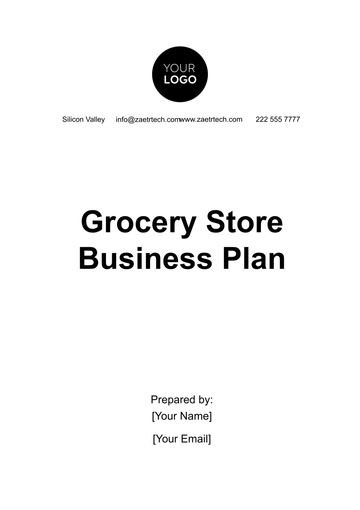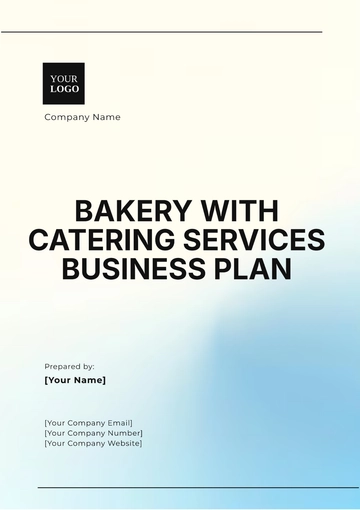Free Food Delivery Business Plan
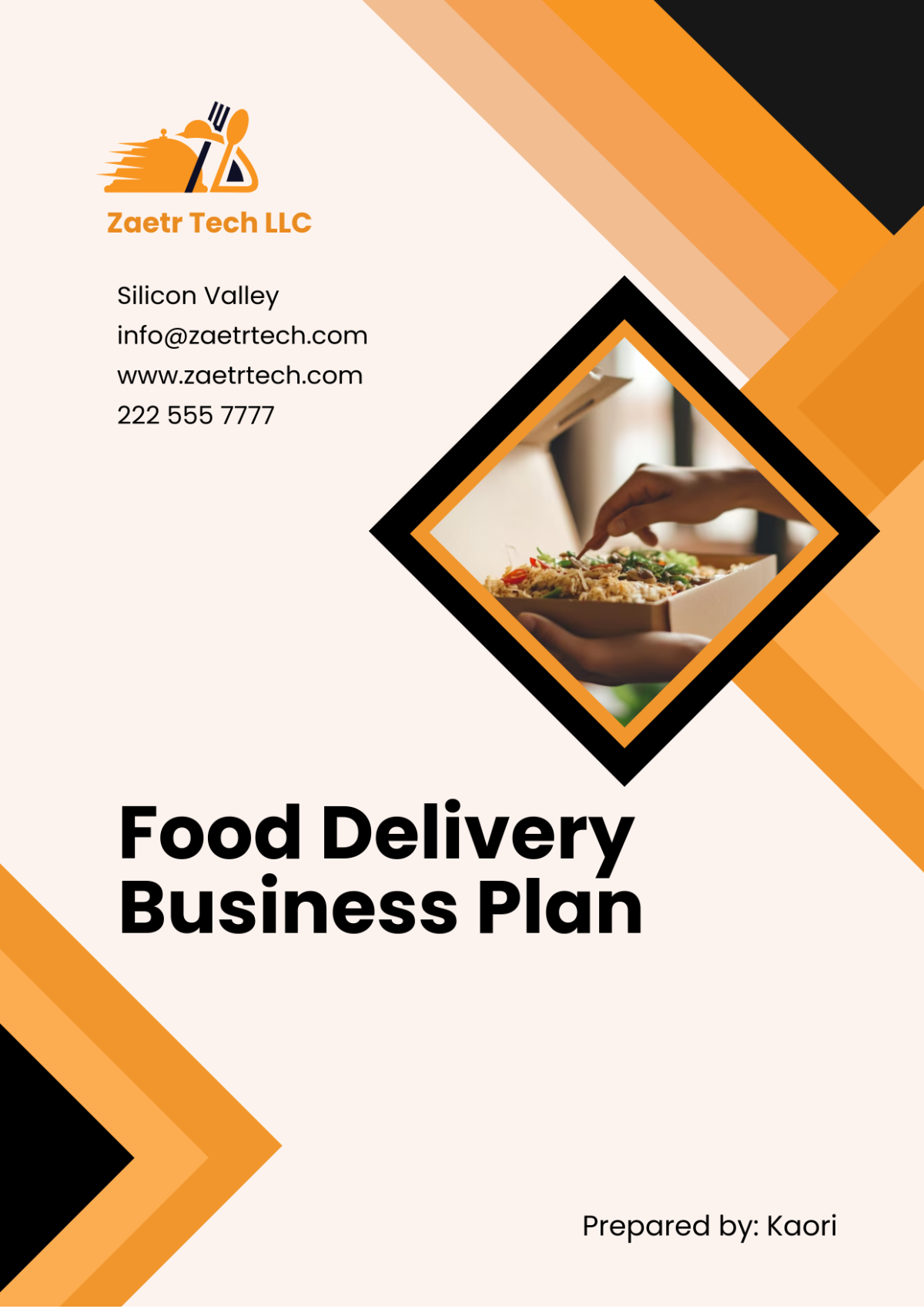
I. Executive Summary
A. Introduction
In the rapidly growing food delivery industry, [Your Company Name] seeks to establish itself as a leading provider of high-quality, timely, and customer-centric food delivery services. The demand for food delivery has been increasing exponentially, driven by a fast-paced lifestyle, the growing popularity of online ordering platforms, and an increasing preference for convenience. By [2050], [Your Company Name] plans to capitalize on this trend, delivering fresh meals from restaurants directly to consumers' doorsteps in less than [30 minutes]. Our goal is to achieve market dominance in the food delivery sector by offering exceptional customer service, optimized delivery routes, and partnerships with premium restaurants. We aim to not only meet consumer expectations but to exceed them through innovation and commitment to quality.
B. Mission Statement
[Your Company Name]'s mission is to deliver delicious, fresh, and varied meals to our customers with speed, reliability, and convenience. We strive to create a seamless user experience by integrating advanced technology and building strong relationships with local restaurants, ensuring that our customers can enjoy their favorite meals whenever and wherever they choose. Our dedication to sustainability and community engagement further enhances our mission, allowing us to contribute positively to the environment and the neighborhoods we serve.
C. Business Objectives
Secure a market share of [15%] in the local food delivery sector within the first [3 years] of operation, enabling us to establish a strong brand presence and a loyal customer base.
Develop partnerships with at least [50] premium local and chain restaurants by [2052], ensuring a diverse range of menu options for our customers and fostering mutually beneficial relationships with our partners.
Achieve a gross annual revenue of $[5 million] by the end of [2053], allowing for reinvestment in technology, staff training, and service enhancements to further improve customer satisfaction.
Maintain a customer retention rate of [85%] through superior service quality and customer loyalty programs, encouraging repeat business and creating a stable revenue stream.
Expand operations to [5] major cities by [2055], diversifying our market presence and tapping into new customer segments.
II. Company Overview
A. Company Description
[Your Company Name] is a technology-driven food delivery company headquartered in [Your City]. Founded in [2050], our company connects customers with a wide selection of restaurants, offering a diverse range of cuisines that cater to various dietary preferences and taste profiles. Through our user-friendly mobile app and website, customers can place their orders quickly and track their deliveries in real-time. Our commitment to innovation will ensure that we remain competitive in a dynamic market where consumer preferences can shift rapidly.
Our unique value proposition lies in the speed of our service, the quality of our restaurant partnerships, and the reliability of our delivery personnel, ensuring a positive customer experience from order placement to delivery. We believe that our focus on customer satisfaction will help us build a strong brand reputation that will resonate with consumers in a crowded marketplace.
B. Ownership Structure
[Your Company Name] is a privately-owned limited liability company (LLC), with its founders holding [70%] of the equity and [30%] owned by early-stage investors who support the company’s operational and technological growth. This structure allows us to maintain control over our business direction while also leveraging the expertise and resources of our investors. Our commitment to transparency and accountability will ensure that all stakeholders are aligned in pursuing our strategic objectives.
C. Location and Facilities
The company operates from its headquarters located at [Your Company Address], which houses our administrative offices, technology team, and call center. Additionally, we maintain a fleet hub and distribution center for managing our fleet of delivery vehicles and coordinating delivery logistics. This strategic location provides easy access to major roadways and allows for efficient dispatching of our delivery personnel. Our facilities are designed to foster collaboration among our teams, enabling us to respond quickly to operational challenges and customer needs.
D. Key Success Factors
Technology Integration – Utilizing an advanced, AI-powered routing system to optimize delivery times and reduce operational costs, ensuring that we can fulfill customer orders promptly and efficiently. This system will analyze real-time traffic conditions, weather patterns, and historical delivery data to provide our drivers with the most efficient routes.
Strategic Partnerships – Building relationships with top-tier restaurants to provide customers with a wide selection of high-quality meals. Our partnership strategy will focus on collaborating with restaurants that align with our brand values, including those committed to sustainability and local sourcing.
Customer-Centric Approach – Ensuring customer satisfaction by focusing on timely delivery, order accuracy, and superior customer service. Our customer service representatives will be trained to handle inquiries and resolve issues effectively, providing support through multiple channels including phone, chat, and email.
Sustainability Initiatives – Implementing eco-friendly delivery options, such as electric scooters and bicycles, to minimize environmental impact. We will also work with our restaurant partners to encourage the use of sustainable packaging materials, further aligning our operations with environmentally responsible practices.
III. Market Research and Analysis
A. Industry Overview
The food delivery market has seen significant growth over the last few decades, with projections showing continued expansion. In [2050], the global food delivery industry is estimated to be worth $[500 billion], driven by increased consumer demand for convenience and a wide range of dining options. The trend toward on-demand services is not just a passing phase; it reflects a fundamental shift in how consumers approach meals and dining.
Online food delivery services now constitute approximately [40%] of restaurant revenue streams, making it a critical component of the overall food service industry. The market is segmented into two primary categories:
Platform-to-consumer delivery, where orders are placed through third-party platforms.
Restaurant-to-consumer delivery, where restaurants manage their own delivery operations. Each segment presents unique opportunities and challenges, and we will strategically position [Your Company Name] to leverage both.
B. Target Market
Our target market comprises individuals who value convenience, including busy professionals, families, and millennials. The key demographic characteristics include:
Age Group: [18-45] years, a group that is increasingly comfortable with technology and seeks convenience in their dining experiences.
Income Level: Middle- to upper-income households earning $[50,000]-$[100,000] annually, who can afford to spend on food delivery as a regular part of their lifestyle.
Geographical Focus: Urban and suburban areas with a high population density, where food delivery demand is the highest. These locations typically have a mix of residential and commercial establishments, providing a steady flow of potential customers.
Consumer Preferences: Health-conscious, tech-savvy individuals who seek quick and varied meal options. Our menu offerings will reflect current food trends, including vegetarian, vegan, and gluten-free options to appeal to a wide audience.
C. Market Trends
Several key trends in the food delivery market will influence our operations:
Increased Demand for Healthy Options – Consumers are becoming more health-conscious, leading to a rise in demand for nutritious and organic meal offerings. We will partner with restaurants that offer healthy menus and promote these options prominently in our marketing materials.
Technology-Driven Solutions – Mobile applications, AI-powered delivery, and cashless payment systems are driving efficiency in the food delivery industry. Our ongoing investment in technology will ensure we remain at the forefront of these advancements, providing our customers with a superior ordering experience.
Sustainability – Consumers are increasingly concerned about the environmental impact of delivery, pushing companies to adopt sustainable practices such as using eco-friendly packaging and electric delivery vehicles. [Your Company Name] will actively communicate our sustainability initiatives to resonate with environmentally conscious consumers.
D. Competitor Analysis
The primary competitors for [Your Company Name] include established food delivery services like [Competitor 1] and [Competitor 2]. These companies have a large market presence, extensive restaurant partnerships, and large delivery fleets. However, [Your Company Name] differentiates itself by focusing on faster delivery times, superior customer service, and exclusive partnerships with premium local restaurants.
Competitor | Strengths | Weaknesses |
|---|---|---|
[Competitor 1] | Large network, diverse restaurant base | Slower delivery times, inconsistent service |
[Competitor 2] | Strong technology platform, low prices | Limited restaurant selection, lower meal quality |
[Your Company Name] | Fast delivery, premium partnerships, excellent service | Higher cost, smaller initial coverage area |
By focusing on our strengths and addressing our weaknesses, we will carve out a niche in the competitive landscape and attract customers who value quality and speed over low prices.
IV. Marketing Strategy
A. Brand Positioning
[Your Company Name] positions itself as the premium choice for food delivery, focusing on high-quality restaurant partnerships, timely deliveries, and an excellent customer experience. Our brand emphasizes convenience, speed, and the freshness of food, appealing to customers who are willing to pay for a superior service. We will utilize targeted branding campaigns to convey our message effectively, ensuring that our unique value proposition resonates with our target audience.
B. Pricing Strategy
Our pricing strategy is designed to be competitive while reflecting the quality of service we provide. Delivery fees will range from $[5] to $[10], depending on the distance and size of the order. Additionally, we will offer subscription plans that give frequent users discounted or free deliveries, enhancing customer loyalty and ensuring a steady revenue stream. A breakdown of our pricing tiers is as follows:
Delivery Distance (miles) | Delivery Fee |
|---|---|
[0-3] | $[5] |
[3-5] | $[7] |
[5+] | $[10] |
We will also implement dynamic pricing during peak hours to manage demand and ensure timely deliveries, balancing our operational capacity with customer needs.
C. Promotional Strategy
Our promotional strategy will leverage both digital and traditional marketing channels to maximize reach and impact. Key promotional activities include:
Social Media Campaigns – Engaging content and promotions on platforms like Instagram, Facebook, and Twitter will help raise brand awareness and attract new customers. We will collaborate with food influencers to reach a wider audience and showcase our offerings.
Referral Programs – Encouraging existing customers to refer friends and family by offering discounts or free deliveries will enhance our customer base while rewarding loyalty.
Local Events Sponsorship – Participating in community events and food festivals will help establish a local presence, allowing us to connect with potential customers directly. We will provide free samples and promotional materials to encourage sign-ups.
Email Marketing – Building a database of customer emails will allow us to engage in targeted marketing, informing customers about promotions, new restaurant partnerships, and exclusive offers.
D. Distribution Strategy
The distribution strategy focuses on efficient order processing and timely deliveries to enhance customer satisfaction. Our delivery personnel will utilize a combination of personal vehicles and company-owned delivery vehicles, optimizing routes through our AI-driven app. Key elements include:
Real-Time Tracking – Customers can track their orders in real-time via our app, increasing transparency and reducing anxiety about delivery times.
Order Management System – An integrated order management system will streamline order processing and ensure that our delivery team is always aware of current orders and delivery assignments.
Fleet Management – Regular maintenance of our delivery vehicles and performance monitoring of our drivers will ensure high service standards and minimize delays.
V. Operational Plan
A. Service Delivery Process
Order Placement – Customers will place orders through our mobile app or website, selecting their preferred restaurant and meal options. Our platform will provide a seamless ordering experience, with detailed descriptions and images of menu items.
Order Confirmation – Once an order is placed, customers will receive an instant confirmation and estimated delivery time. This confirmation will be sent via email and app notification, ensuring customers are kept informed.
Preparation and Dispatch – Orders will be sent directly to the restaurant’s kitchen, where staff will begin preparing the food. Upon completion, the order will be dispatched to one of our delivery personnel, who will be alerted via our delivery app.
Delivery – Delivery personnel will utilize optimized routing technology to deliver the order to the customer’s location as quickly as possible, with the goal of maintaining our commitment to a [30-minute] delivery window.
Feedback Loop – Following delivery, customers will be encouraged to provide feedback on their experience via the app, allowing us to continuously improve our services based on customer insights.
B. Technology Requirements
To facilitate efficient operations, we will invest in the following technology:
Mobile Application – A user-friendly mobile app for customers to place orders, track deliveries, and manage their accounts.
Driver Management System – An integrated system to assign orders to delivery personnel, monitor performance, and manage schedules.
Customer Relationship Management (CRM) – A CRM system to track customer interactions, preferences, and feedback, enabling us to personalize marketing efforts and improve service.
Analytics Dashboard – A data analytics tool to monitor key performance indicators (KPIs), including delivery times, customer satisfaction, and revenue growth, allowing for informed decision-making.
C. Staffing Plan
A well-structured staffing plan is essential for ensuring operational efficiency and service quality. Key roles include:
Management Team – Comprising a CEO, COO, and CMO, responsible for strategic direction, operational management, and marketing initiatives.
Customer Service Representatives – A team of trained representatives available [24/7] to assist customers with inquiries and complaints via phone, chat, or email.
Delivery Personnel – A team of skilled drivers, hired based on experience and local knowledge, responsible for ensuring timely deliveries. We will conduct background checks and provide comprehensive training on customer service and delivery best practices.
Restaurant Partnerships Manager – A dedicated manager to oversee relationships with partner restaurants, ensuring high-quality food offerings and service alignment.
IT Support Staff – A team to maintain our technology infrastructure, addressing any issues that arise and implementing updates to keep our systems running smoothly.
D. Delivery Fleet
[Your Company Name] will maintain a diverse fleet of vehicles, including cars, scooters, and bicycles. Our fleet strategy will include:
Vehicle Acquisition – Acquiring vehicles based on operational needs and environmental considerations. For instance, using electric vehicles in urban areas to reduce carbon emissions and enhance sustainability.
Fleet Maintenance – Regular maintenance schedules to ensure vehicle reliability and minimize downtime, with a dedicated team responsible for managing the upkeep of our fleet.
Driver Training – Comprehensive training programs for drivers on safe driving practices, customer service excellence, and efficient navigation techniques to enhance their effectiveness.
VI. Financial Projections
A. Startup Costs
To establish [Your Company Name], we estimate initial startup costs to be approximately $[500,000], which will cover the following areas:
B. Revenue Projections
The revenue projections for the first five years of operation indicate steady growth as we establish our brand and expand our market presence. We anticipate a gradual increase in revenue as our customer base grows and we expand our service offerings:
Year | Projected Revenue | Projected Costs | Projected Profit |
|---|---|---|---|
[2050] | $[500,000] | $[300,000] | $[200,000] |
[2051] | $[2.5 million] | $[1.2 million] | $[1.3 million] |
[2052] | $[4 million] | $[2 million] | $[2 million] |
[2053] | $[5.5 million] | $[3 million] | $[2.5 million] |
[2054] | $[7 million] | $[3.5 million] | $[3.5 million] |
C. Break-Even Analysis
Our break-even analysis indicates that we will need to generate approximately $[800,000] in revenue to cover our fixed and variable costs. This is projected to occur in the second year of operation, as we ramp up our marketing efforts and build a loyal customer base. By effectively managing costs and optimizing our delivery processes, we aim to reach profitability within the first [24 months].
D. Funding Requirements
To finance our startup costs and initial operations, we are seeking $[500,000] in funding from investors. This funding will be allocated toward technology development, marketing efforts, vehicle acquisition, and working capital. In return, we are offering a [20%] equity stake in [Your Company Name] to investors who align with our vision and values. We believe this investment will enable us to achieve our growth targets and solidify our position in the food delivery market.
VII. Risk Analysis
A. Market Risks
Increased Competition – The food delivery market is becoming increasingly crowded, with large players already dominating. To mitigate this risk, [Your Company Name] will focus on differentiating through superior customer service and exclusive partnerships. Our marketing campaigns will emphasize our unique selling points and customer testimonials to build brand loyalty.
Economic Downturns – Economic fluctuations could impact consumer spending, reducing demand for food delivery. In response, we will implement cost-saving measures and flexible pricing strategies to retain our customer base. We will also diversify our menu offerings to appeal to a broader audience, ensuring we cater to varying budgets.
B. Operational Risks
Delivery Delays – Traffic congestion and unforeseen delays could impact our delivery times. We will mitigate this risk by using AI-driven route optimization and ensuring a well-maintained delivery fleet. Regular training sessions for our delivery personnel will also focus on time management and efficient navigation.
Technology Failures – As a technology-reliant company, server downtime or app malfunctions could severely affect operations. We will invest in backup systems and round-the-clock IT support to prevent significant disruptions. Additionally, routine system checks and updates will ensure that our technology remains reliable.
C. Legal and Regulatory Risks
Compliance Issues – Operating in the food delivery industry requires adherence to various health and safety regulations. We will ensure compliance by maintaining high food safety standards and training our restaurant partners on best practices. Regular audits will be conducted to ensure ongoing compliance.
Liability Risks – Delivery personnel may face potential accidents or injuries during deliveries. To mitigate this risk, we will provide comprehensive insurance coverage for our drivers and implement safety training to minimize accidents.
VIII. Conclusion
By [2050] and beyond, [Your Company Name] is poised to become a dominant player in the food delivery industry. Our strong focus on technology, customer service, and strategic partnerships will enable us to capture a significant share of the market while ensuring operational efficiency and sustained profitability. Through a combination of a scalable business model, innovative marketing strategies, and a commitment to quality, we are prepared to meet the evolving demands of consumers in this dynamic market.
As we move forward, we will continue to monitor industry trends, invest in our technology and people, and adapt our strategies to ensure our long-term success. The future is bright for [Your Company Name], and we are excited about the opportunities that lie ahead in the food delivery landscape.
- 100% Customizable, free editor
- Access 1 Million+ Templates, photo’s & graphics
- Download or share as a template
- Click and replace photos, graphics, text, backgrounds
- Resize, crop, AI write & more
- Access advanced editor
Launch your food delivery service with confidence using the Food Delivery Business Plan Template from Template.net. This editable and customizable template guides you through outlining your business model, target market, financial projections, and marketing strategies. Use our Ai Editor Tool to tailor it to your specific vision and goals.
You may also like
- One Page Business Plan
- Coffee Shop Business Plan
- Restaurant Business Plan
- Food Business Plan
- Real Estate Business Plan
- Executive Summary Business Plan
- Cover Page Business Plan
- Nonprofit Business Plan
- Daycare Business Plan
- Construction Business Plan
- Startup Business Plan
- Medical Business Plan
- Bakery Business Plan
- Service Plan
- Hotel Business Plan
- Catering Business Plan
- School Business Plan
- Healthcare Business Plan
- Transportation Plan
- Sports Plan
- Car Wash Business Plan
- Salon Business Plan
- Clothing Business Plan
- Farming Business Plan
- Boutique Plan
